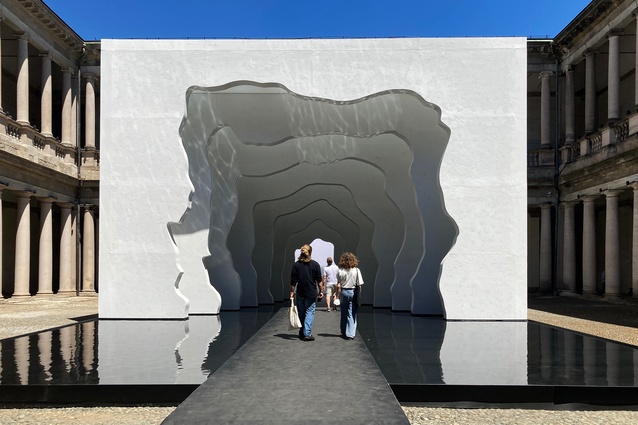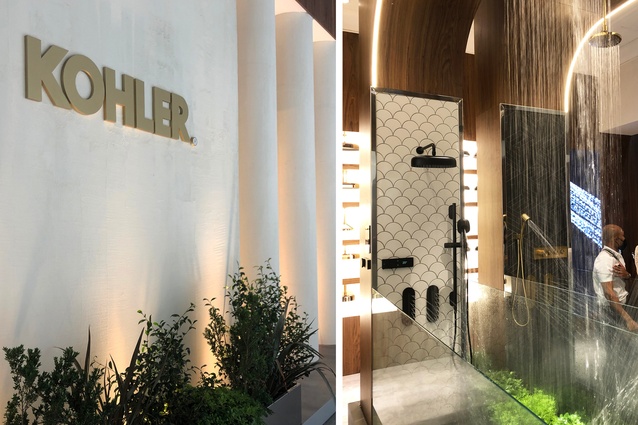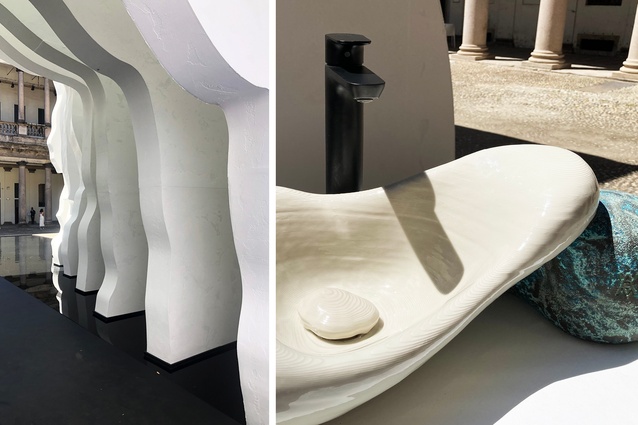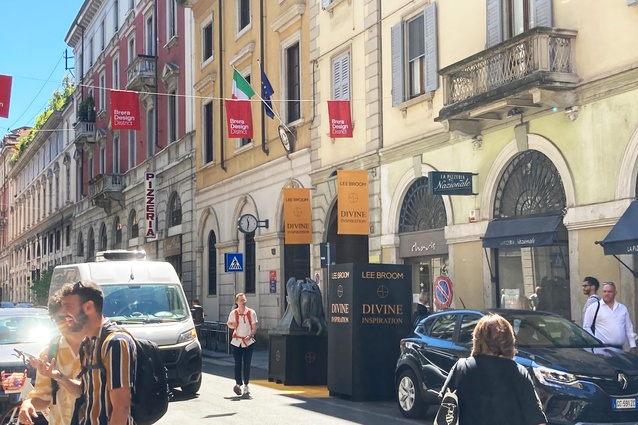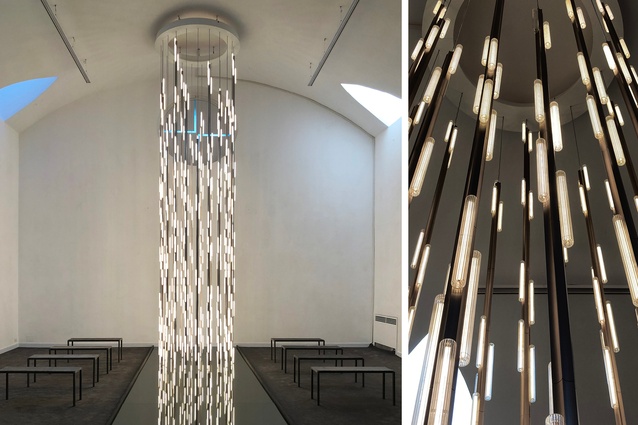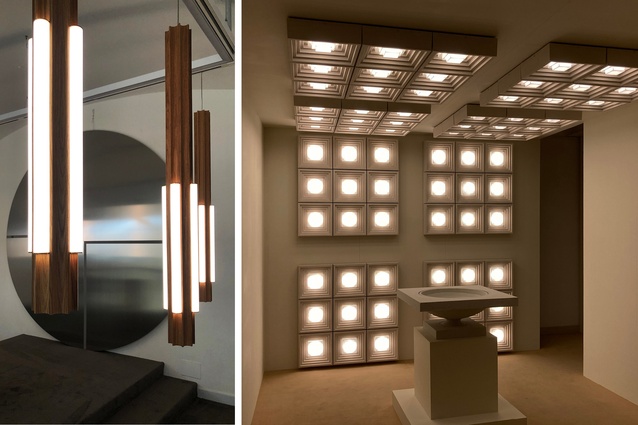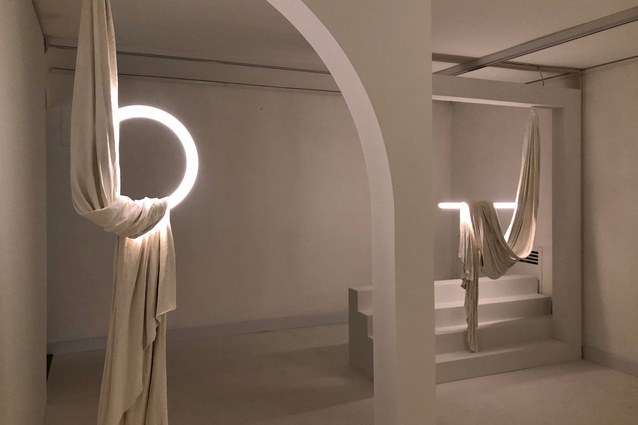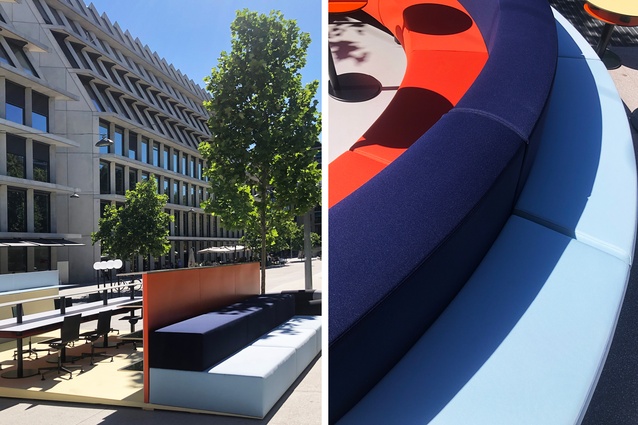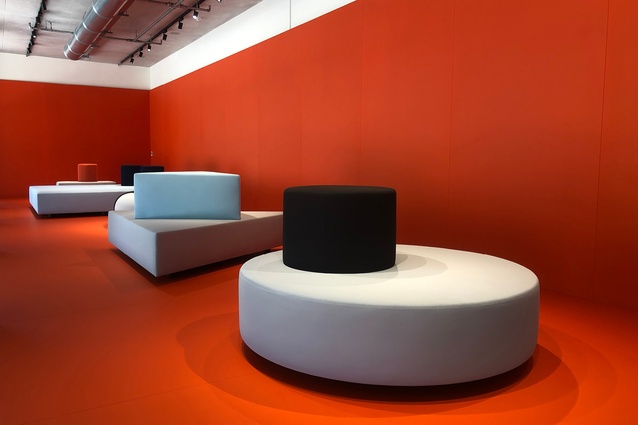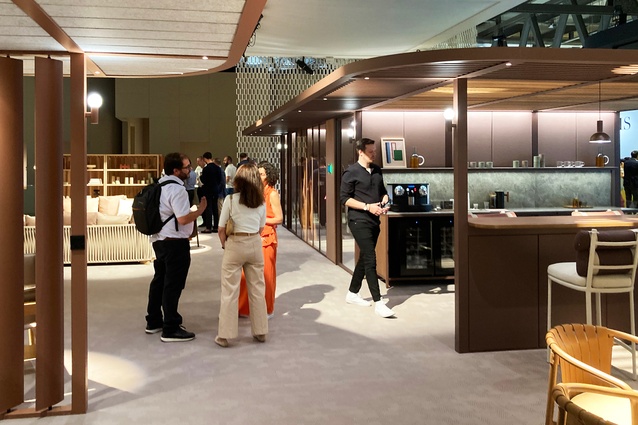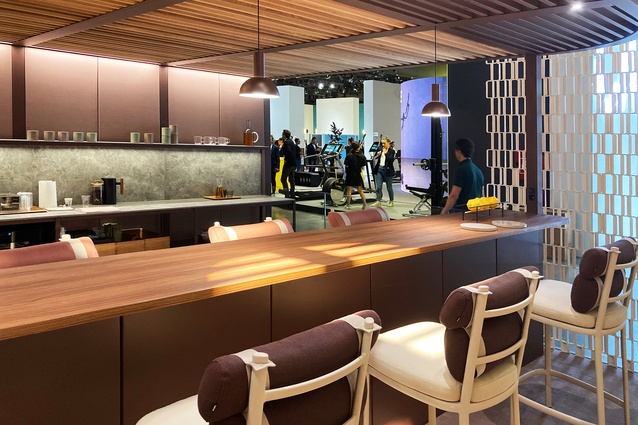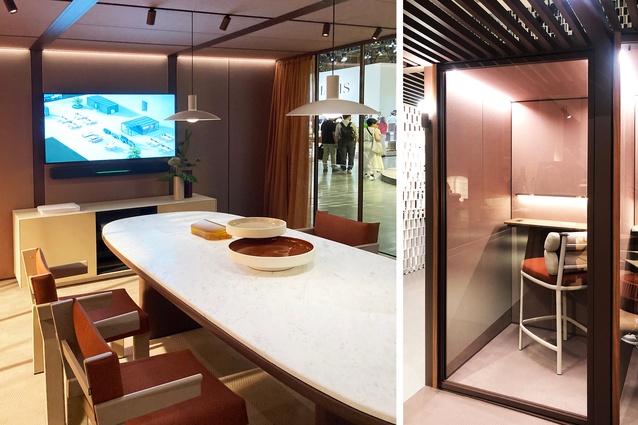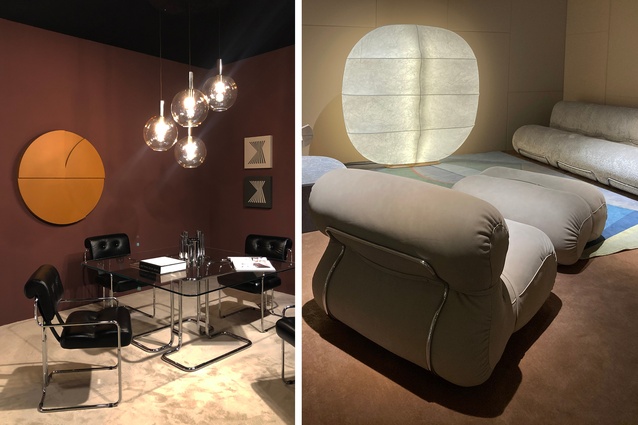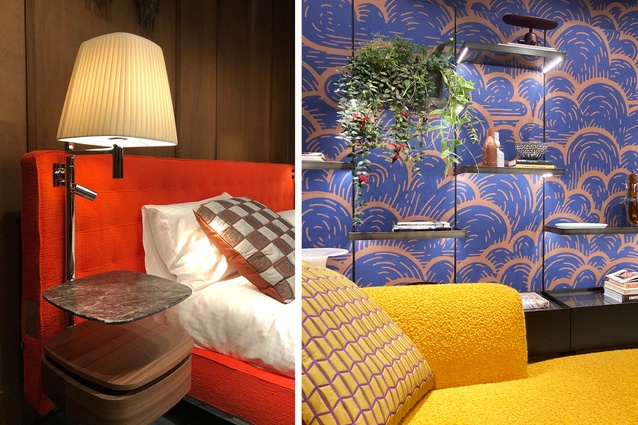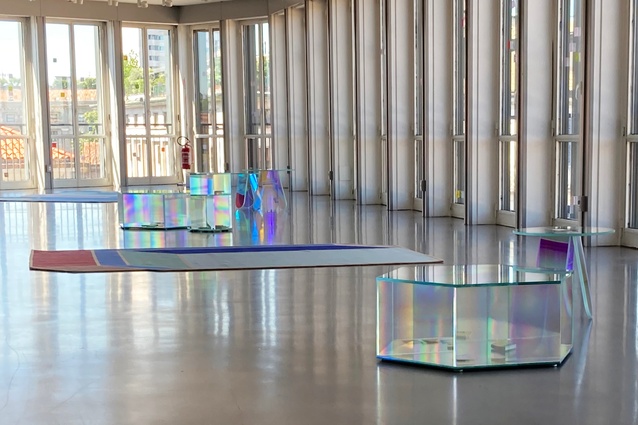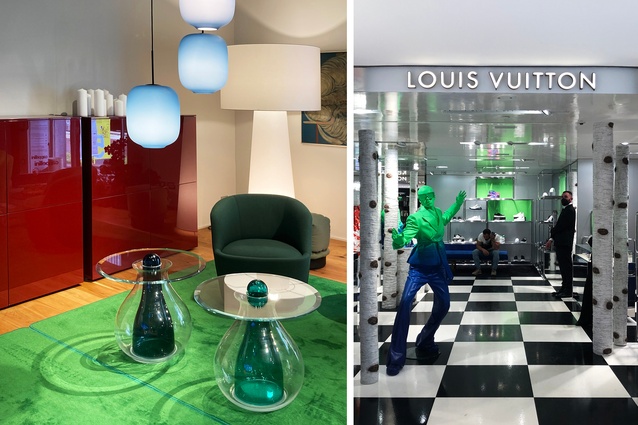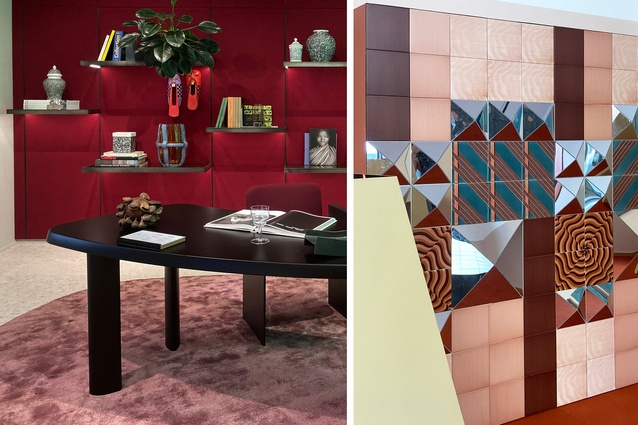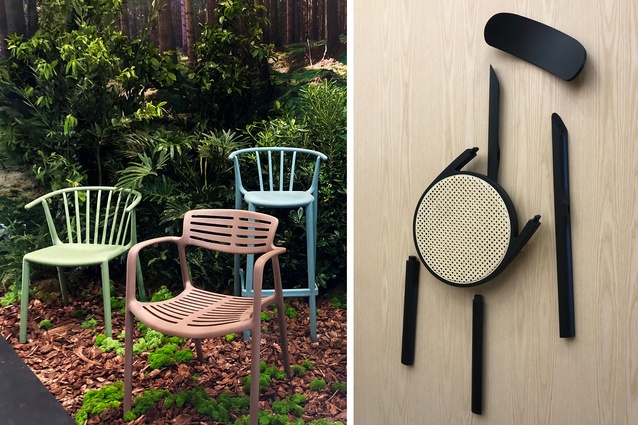Musings from Milan: A design pilgrimage
Like bees to honey, Salone del Mobile and Milan Design Week is an annual check-in for designers all over the world. It’s where an intersection of the world's finest product, textile, interior and set design is executed to the highest standard and on an enormous scale. Audrey de Filippis and Sacha Ghisleni of Ignite Architects recount their experience of the 60th edition of the fair held in June of this year
— a spectacle they say, that never failed to impress.
For those who are not familiar, there are two parts to the design fair; there’s Salone del Mobile and then there’s Milan Design Week. Salone is the one-week-only furniture fair that is held at an enormous fairground facility in Rho, on the outskirts of Milan. In this year’s milestone edition, the Salone filled 210,000m2 with 2,175 exhibitors and 262,608 total attendees from 173 countries. The name suggests that it’s all about furniture, but its reach is far greater than that — you’ll find bathrooms, kitchens, wardrobes, tiles, fabrics, rugs, lighting, and everything in-between.
But if you want the full experience (and you do), you need to head into Milan to see the special installations and events put on by brands in and around their city showroom locations. All of these events comprise Milan Design Week or ‘fuorisalone’ as the Italians call it, literally translating to ‘outside of fair’.
A consistent theme of sustainability and social responsibility ran through the events of the week, stretching far beyond a call to action regarding climate change. It reinforced the need for resiliency in design as we face challenges from global lockdowns, supply chain disruption and political instability — issues echoed across the world.
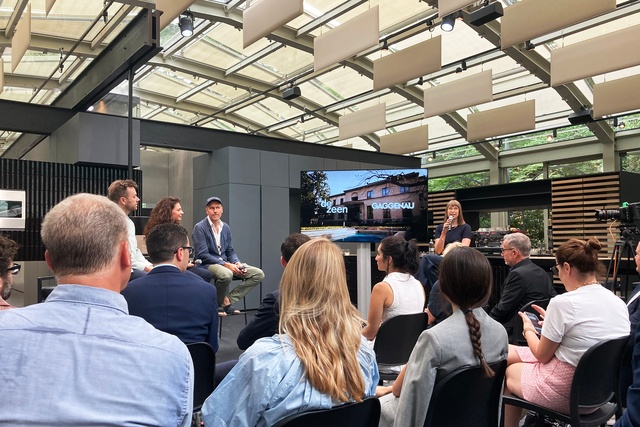
We attended a panel discussion hosted by Gaggenau in partnership with Dezeen at the iconic Villa Necchi in Milan on the topic of longevity and sustainability. Being increasingly conscious of our impact on the planet and desire to minimise our footprint, we found this talk from Francesca Portesine (Director of Interiors, Bjarke Ingels Group), Søren Rose (Founder, Søren Rose Studio) and Mike Holland (Head of Industrial Design, Foster + Partners) thought-provoking. They advocated ways in which we, as design professionals, can steer the industry towards holistic sustainable practices.
Our role as designers, they championed, is to gently guide our clients towards best practice approaches and more importantly, to understand the entire impact of decisions. Understanding lifecycles and manufacturing processes from end to end is the only way to measure the potential impact of material and product selections. With over 250 different types of ‘green’ certifications globally within the industry, it has become an overwhelming and confusing process to confidently navigate a sustainable design approach. A genuine advocacy for sustainability has inadvertently resulted in ‘greenwashing’ creating a barrier in the design process. The panellist called for standardisation of green credentials and transparency to empower sustainable design.
On a lighter note, below are some of the highlights from this year’s fair:
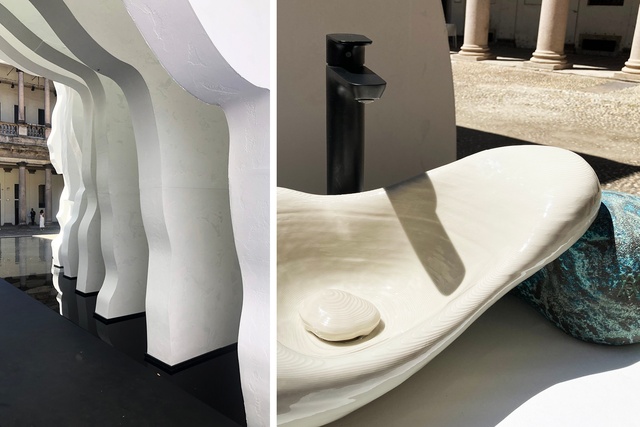
First up – Kohler really made a splash this year. Not only did they put up an incredible stall at the Salone — one of few which was fully plumbed — they also commissioned artist Daniel Arsham to create a human-scale immersive artwork, ‘Divided Layers’, at the Palazzo del Senato in Milan inspired by The Rock.01: a gorgeous, limited edition wash hand basin (also by Arsham) made with Kohler’s 3D-printing technology. The new technology means that more organic shapes and textures are possible, there is zero waste, and the basin uses less material as the printer can layer rows of internal structure instead of relying on a solid material. If this can be done with vitreous china to make a basin, imagine the possibilities elsewhere.
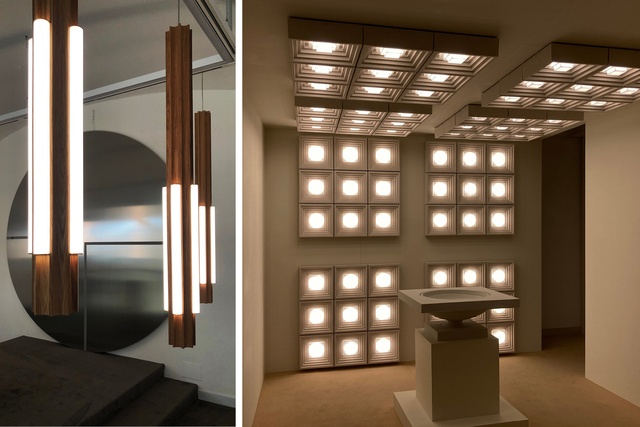
Another standout was British designer Lee Broom who unveiled his first collection in four years. Aptly named ‘Divine Inspiration’, Broom drew inspiration from the forms and shapes found in places of worship. Our favourite was ‘Pantheum’ — a surface-mounted fitting reminiscent of the coffered dome ceiling of the Pantheon in Rome. On its own, a strong geometric ceiling or wall fitting, but as a collection of multiple, it creates a powerful and ethereal feature. The exhibition took over a whole building, chosen for its church-like and brutalist features and unfolded within a series of rooms, staged to celebrate each unique design. The final display, in a crypt-like space in the basement, unveiled the most delicate designs of the collection — all four variations of ‘Requiem’. These designs look as though they are made of flowing fabric but are in fact handcrafted by Lee Broom himself from draped plaster with glowing orbs, bars, and rings — only 15 of each will ever be made.
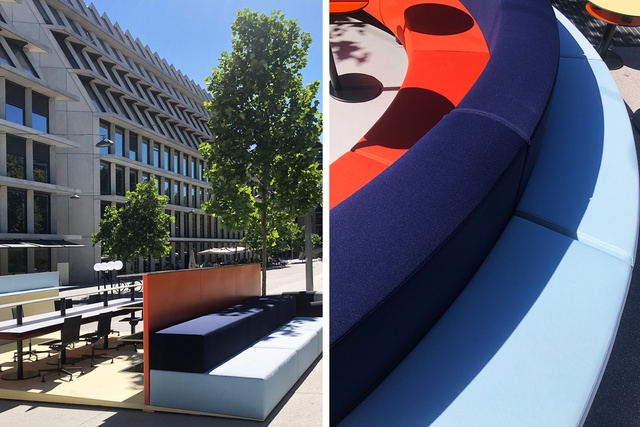
Workplace design showcased a far greater presence than in past years. UniFor in partnership with OMA launched a new collection of highly flexible furniture solutions for the modern workplace. The collection is called ‘Principles’ and aims to offer a modular solution, with each element designed in four different sizes, providing the opportunity to mix and match products to create an endless number of configurations. In Milan, the majority of their display was positioned outside in broad daylight — a stunning way to showcase the unique colours on offer. Practical features included integrated power sockets, extra-durable laminates and microperforated sheet metals for enhanced acoustic performance.
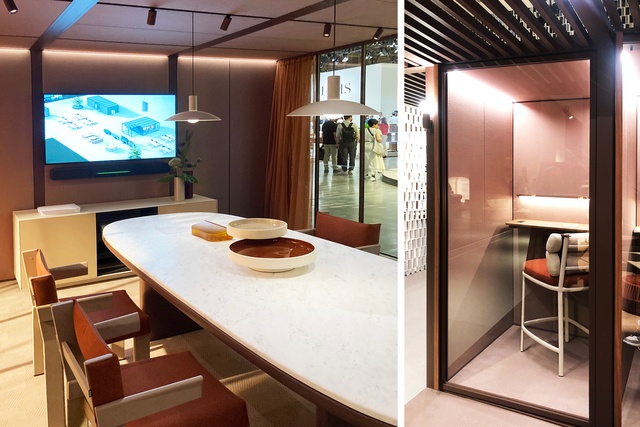
Kettal showcased a softer residential approach to workplace design displaying their 2021 ‘Pavilion O’ collection. A development from their outdoor cabana structures, they have created a modular solution that provides flexibility to allow for reconfiguration of office spaces. The collection includes small to medium meeting rooms, large board rooms, kitchen spaces, phone booths, open collab spaces, and lounge areas. Their booth showcased a multi-functional office space using their Pavilion O structures, varied furniture and a new release from Kettal Studio, ‘Tectum Garden’ — a hydroponic vegetal garden for use in indoor spaces.
Finally, we all like to hear about trends. Here are our top four:
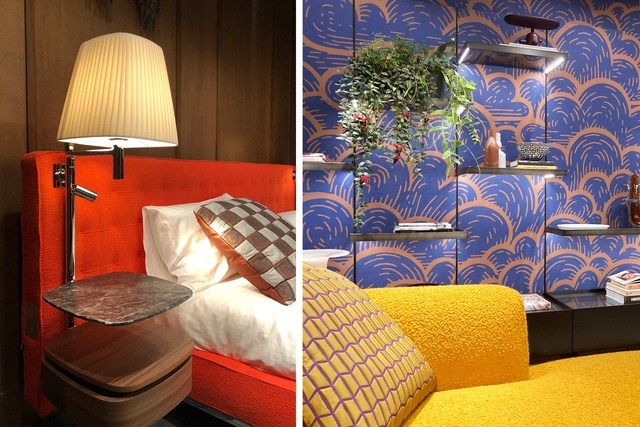
1. 1980s furniture revival: Designs reminiscent of the 1980s not so much in pattern (florals and paisley still tightly locked away), but in texture, form, and detail. Dense corduroy and bouclé fabrics paired with curved upholstery elements and other squarer forms featuring polished chrome tubing. Tacchini’s Utopia and 4 Mariani’s Tucroma collections embodied these.
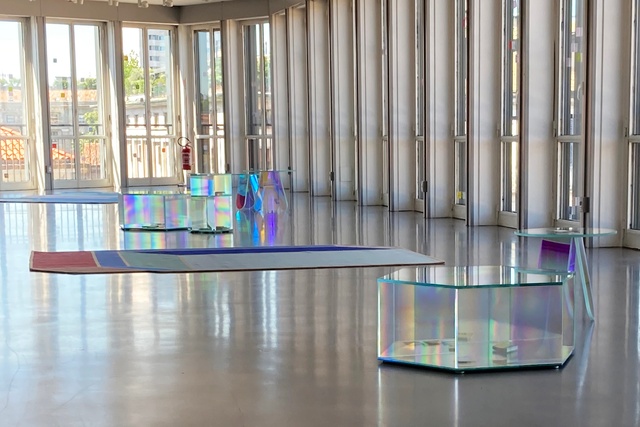
2. Glass: We witnessed so much creativity using coloured and textured glass. Glas Italia had Mondrian-inspired multi-coloured glass screens and coffee cubes. Partnering with Patricia Urquiola, they displayed a series of dichroic tables, bookshelves, and mirrors. Nature Design showed off their detailing prowess with their Waterfall and Ill Murano ranges of tables, assembled in beautiful configurations featuring rock-cast glass.
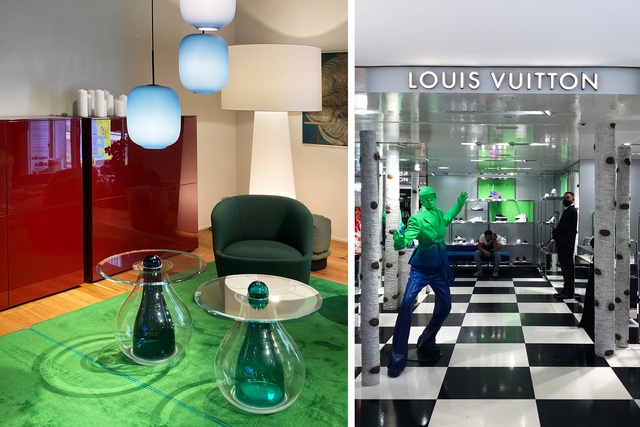
3. Bold use of colour: Solid colour schemes were found throughout, using plenty of saturated colours. Popular and/or resurrected tones included:
- Burnt orange, already a popular choice and from what we saw, is here to stay.
- Classic blue joined the party (a bit of a delayed celebration from its Pantone Colour of the Year award in 2020).
- Burgundy tones appeared in many of the luxury product displays. We also noticed a resurgence of red marbles like Rosso Levanto and Red Serpentine.
- Finally, we saw a lot of green. Uniquely the most common shade of green — let’s call it an “optimistic green” was brighter than grass, almost a lime, but with more yellow mixed in.
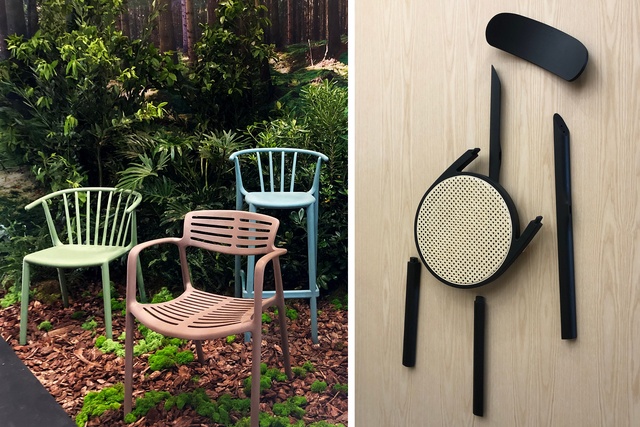
4. Reduce, Recycle and Re-think: Touching again on sustainability, circular design stories were on display by several product manufacturers, from fully recycled outdoor seating to flat-packed furniture, and intensive review of internal structures and material composition.
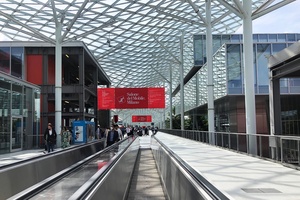
It was a privilege to be in Milan for Design Week and to experience this creativity first-hand. The streets were alive, people were everywhere, and a bustling energy reminded us of the days before the pandemic. It was hot and exhausting, but worth the sore feet and blisters to enjoy every moment. We left inspired — not only by the design we had seen but also with a sense of positivity: creative thinking and passion will continue to bring resolve to our global design challenges.
Audrey de Filippis leads the Hotel, Entertainment and Experiences team at Ignite Architects, Auckland. Sacha Ghisleni is an Interior Designer also at Ignite, Auckland specialising in hospitality and residential interior fit-outs.

